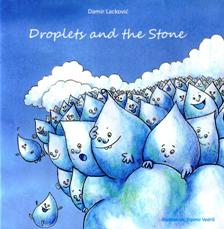 Droplets and the Stone
Droplets and the Stone
Damir Lackovic
Published by: The Croatian Museum of Natural History
Publication date: 2008
ISBN: 978-953-6645-44-2
List price: £4.95
Engaging children with science is high on the education agenda, with suggestions ranging from creating more fun and interactive experiments in schools, to the inevitable obsession with computer technology. It’s refreshing, then, to see that the good old fashioned children’s science book is still part of the mix. Although originally written and published in Croatian, the intriguingly titled Droplets and the Stone also exists in an Italian, German and English translations, all of which feature Trpimir Vedris’ charming illustrations.
The book is published by the Croatian Natural History Museum, and written by Damir Lackovic, an employee of the Museum. It tells the story of how water droplets and calcite crystals combine to form karst – a landscape more familiar in Croatia than in England. Karst landscapes form when mildly acidic water dissolves the surface of limestone, creating and enlarging fractures and forming an underground drainage system, which eventually results in under and over-ground karst topography. What sounds like a fairly uninspiring topic for a children’s book becomes a comic tale of adventure, as the droplets and the calcite crystals are personified, embarking on an epic journey together.
Alongside the narrative are included various facts, definitions, and even extracts of poetry relating to the story, as caves, stalactites, stalagmites, flowstones, rimstone pools, cave pearls, cave rafts and shelfstones are created. And throughout, the book manages to avoid the geological puns that so often show up in children’s science books – not a ‘cracking up’ or a ‘ground breaking’ in sight. This may be a result of translation, which might also account for one or two scientific discrepancies – the phrase ‘limestone was sand on the bottom of a shallow warm sea’ stands out as particularly problematic . Another problem is the very unfriendly font, with all the text printed in bold capital letters.
These small issues aside, Droplets and the Stone manages beautifully to narrate what could easily be a fairly technical subject in a fun and engaging way which is likely to appeal to anyone curious to know how the landscapes around them have formed. It goes to show that making science fun needn’t involve big bangs and complicated technology; just the ability to turn facts into stories. And, of course, some pretty pictures to go with them.
Sarah Day